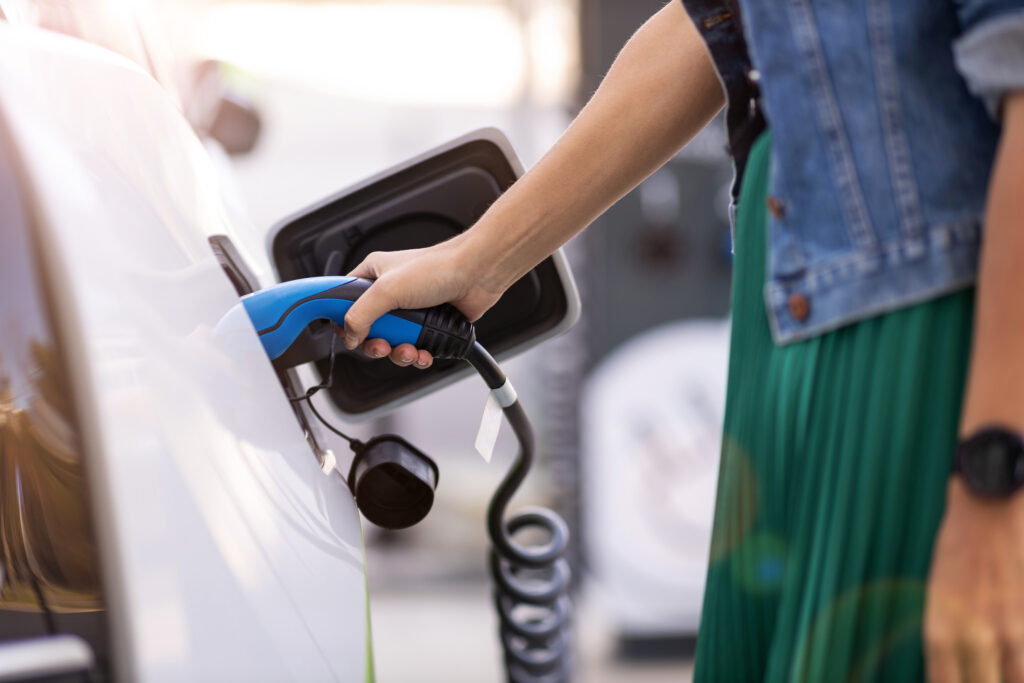
Without smart policy, the U.S. risks missing out on a historic moment that also could lead to middle-class job creation.
Late last week, California Gov. Gavin Newsom (D) made headlines when he announced an order to ban the sale of gas-powered vehicles in the Golden State starting in 2035. Given that car-crazy California is the nation’s most populous state, the thinking is that the ban will force a coast-to-coast move toward electric vehicles (EVs).
Indeed, such a transition already seems to be underway. General Motors is banking much of its future on EVs, while Tesla just announced new battery technology that it says will significantly lower the price of electric cars.
But despite this progress, the United States remains behind much of the world when it comes to electric vehicle production – and it’s becoming increasingly clear that smart policy is needed to not only catch up, but create good-paying jobs, too.
A new study from the Center for American Progress looks at the strategic federal policy needed to expand domestic electric vehicle production and “ensure a good jobs future for the United States.” While much of the discussion around EVs often centers on the need to reduce emissions to address climate change – clearly a pressing topic – it’s vital to remember that somebody has to actually build all those new eco-friendly vehicles.
And countries like China already are way ahead of the United States in EV manufacturing.
Chinese production “accounted for nearly half of global EV sales in 2018 and more than half of global lithium battery cell manufacturing capacity.” U.S. production, meanwhile, made up less than 20 percent of global EV sales in the same year. The United States is even further behind in the EV supply chain, particularly batteries, and could become even more reliant on imported parts and components if action isn’t taken now.
The stakes are huge, given how important the U.S auto industry is to the U.S. economy.
More than 3 million Americans work in auto dealerships or auto manufacturing; nearly 1 million work in motor vehicle and motor vehicle components manufacturing. Hundreds of thousands more work in supplier industries like steel and aluminum.
These are good jobs, paying more than other industries on average. Autoworkers can make between $20 and $30 an hour – although the report notes that non-union and temporary workers typically make less – and employ a higher share of Black workers than other parts of the manufacturing sector.
On the EV front specifically, there are 250,000 American workers “employed in the manufacture, sale, repair and maintenance of electric, hybrid, and hydrogen fuel-cell vehicles.” About 69,000 workers at 200 factories across the country make components and technology for hybrid and electric vehicles.
But that’s nowhere near where the United States needs to be able to compete globally. On top of that, policy action is needed to convince more Americans to make the switch to EVs, from building a national network of charging stations – which in itself will create jobs, something Democratic presidential candidate has pointed out in his own clean energy proposal — to incentivizing EV purchases though avenues like tax credits and trade-in programs.
“Without government interventions to spur consumer demand for EVs, high unemployment rates and low gas prices could skew the short-term calculus on whether to buy an EV or invest in new manufacturing capacity,” the authors write. “Smart federal investments will also ensure that the United States meets climate goals and can compete in the global economy. By supporting high-quality domestic jobs, policymakers can ensure that workers earn decent wages and help jump-start growth in other sectors by spending their earnings in their communities.”
In addition, the report recommends support for workforce retraining and job placement for existing workers or those who find themselves without work during the switch to EVs. Efforts also should be made to recruit disadvantaged workers and those underrepresented in the sector, including women, people of color, and workers with disabilities.
Policymakers also should take steps to ensure EV production happens locally. That’s where Buy America comes into play, ensuring that any federal taxpayer money spent on this effort will be reinvested right back into U.S. communities, creating jobs and supporting American companies.
For example, Buy America must be applied as many government agencies look toward moving their fleets toward EVs. The federal government owned or leased more than 640,000 vehicles in 2018; a pivot to American-made EVs will ensure American manufacturers, including those in the supply chain, will have a guaranteed income steam as they look to build their business.
Taxpayer money should not be given to companies like China’s Build Your Dreams (BYD), which is aiming to dominate the global EV industry – but also presents a major national and economic security risk to the United States, as it maintains close ties to China’s military, government, and the Chinese Communist Party.
The United States is facing “significant economic and environmental challenges,” as the report notes. But the country also has an opportunity to create good-paying jobs and reduce carbon emissions at the same time. Policymakers shouldn’t let the moment pass them by.
Read the full report, Electric Vehicles Should Be a Win for American Workers.
